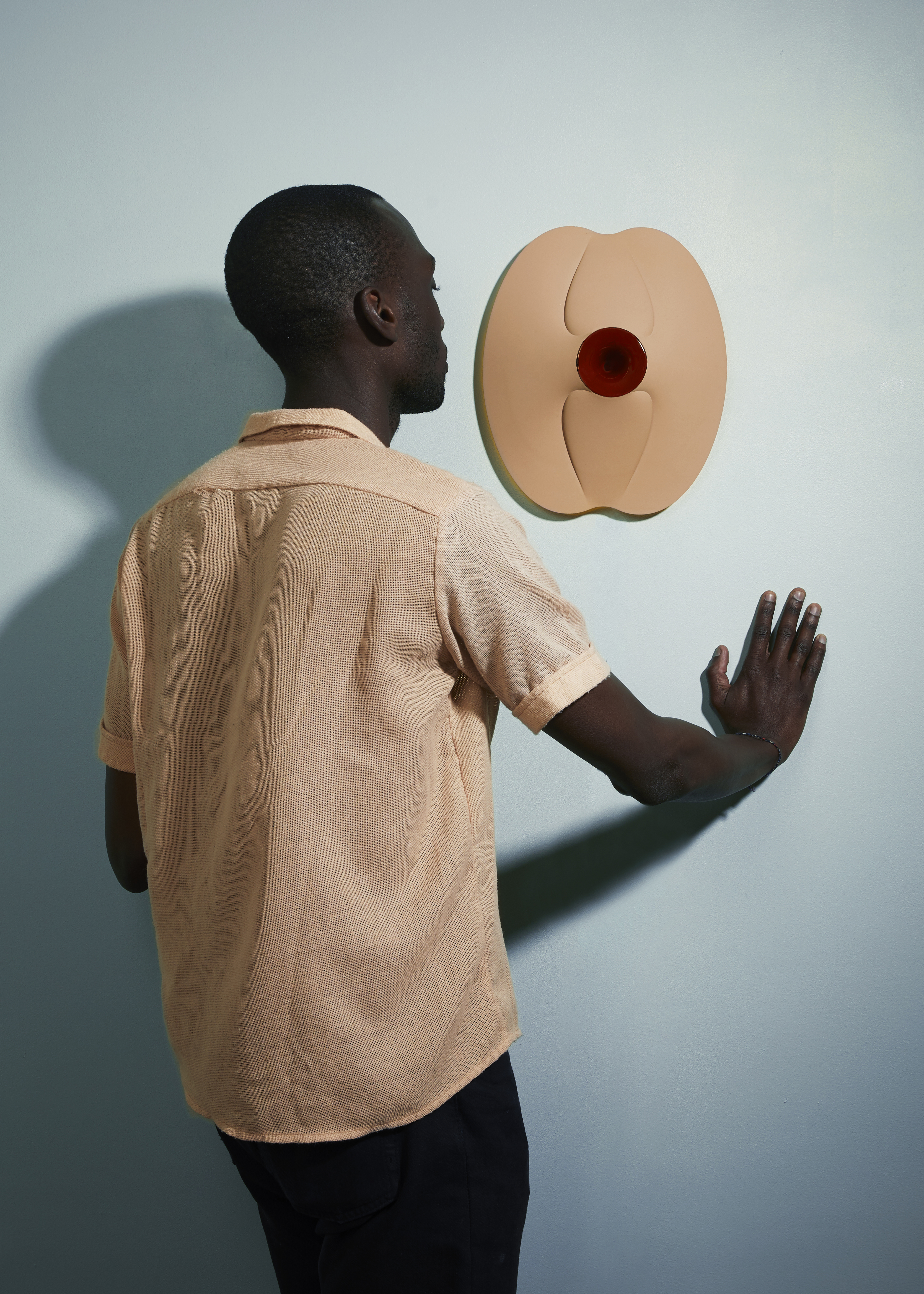From genetic modification to animism, the limit of the living and the non-living is nuanced. It is shaped according to a sensory perception within which the state of matter, object or being evolves. Expérience de panser is a set of transitional devices that attempt to respond to therapeutic issues in which cancer diseases embody and question this threshold state, located between life and death. It is the result of an experimental research work initiated through a plastic exploration on the borders of the Living or those which separate human and non-human.
The speculative approach and the plastic exploration Être(s) à part are attempts to invest this buffer zone, opposing as a natural and artificial duality the use of 3D softwares and handmade drawings. It deploys an imaginary space, giving life to plural identity assemblages born form juxtaposition and addition of matters, shapes, colors.
Plastic research is accompanied by speculative writing research Ontologie partagée, developed from meetings with microbiologists and specialists in the culture of stem cells. Words are considered as a living matter, creating imaginaries that question our relationship with livings, to favor positions of attention and care, in particular towards a human body that is shared with millions of beings (bacteria, cells, viruses, fungi). In these micro-stories meet living objects, humans and non-humans who share relationships of cooperation, mutual listening that question the boundaries of body and identity or those that separate species. Artificial objects become living elements that offer means of interaction and mediation with other than human, with a world of the invisible.
It is estimated that around 3.8 million people are diagnosed with cancer each year in France, of which breast, lung and brain cancer are among the most frequent.
Based on dialogues with scientists, Expérience de panser proposes to deploy a series of three transitional objects responsible for supporting individuals suffering of cancer. Each of them suggests different forms of care relation, the central use of which revolves around a mediation with the disease. Each of the three objects embody a relationship of attention to offer a mediation between body and mind. These are objects that act as intermediate supports. They aim to accompany the individual in the phase of announcement and acceptance of the disease with principles of interaction specific to each object.
Each of them is to be considered as a waiting body, inside which the person can deposit a tumor sample. It is kept in a white capsule which appear as relic taking care of the fragment’s disease which also bears an important part of the individual's identity.
It is therefore a way of giving an identity, a soul, bringing the object to life and creating closeness. The user can initiate a distancing from the disease and a care relationship.

Thought to accompagny the lung cancer, a first object offers an oral interaction based on the ability of the respiratory organ to exchange oxygen with its environment.
Thanks to the collaboration of designer Antoine Pintout, we developed a principle of light reaction based on the sound interpretation of the user’s voice. The tones emitted by the individual are translated by an integrated software which transcribes the wave values into light intensities.
The person’s breath carries the words towards the half-hidden tumor specimen located in the center of the object. The integrated electronics and sensor act as a life support whose activation energy depends on the presence of the individual. The vocal fluctuations create an indeterminate rhythm, oscillations of light according to the interlocutor.


The relationship to breast cancer in women and men is characterized by a collective workshop during which the user gives substance to a clay material as a physical relationship with the embodiment of the tumor. It’s a moment of self-expression about what breast cancer represents. From the symbolic loss of femininity or masculinity linked to the possible removal of the breast to the unconscious feelings projected into matter.
The base that protects the tumor cell harvest offers to accommodate the shaped material in the hollow of its upper enveope. A material in the image of the disease itself, alive, which is constantly changing. The clay shrinks, cracks and shrinks in size while being able to be reworked if the user wishes.



In the case of brain cancer, the interaction consists of a form of writing therapy in which words are written and inserted into the heart of the object as if to better remember the path taken during the period of treatment of the disease. It allows the indi- vidual to come back at any time to the writings and the emotions they have experienced in order to take a step back. Its shape and colors tend to evoke a living envelope, which like a headrest offers to support and welcome the face of the person just like the thoughts which are whispered in a low voice in the hollow of the material.
Echoing the ecological crisis or what the philosopher Baptiste Morizot calls ‘the crisis of our relationships with the living’, this project is an attempt to heal this relationship which concerns as much living beings integrated into a perceptible environment as those who inhabit neighboring territories, on the verge of death, inside and outside the human body that we need to take care of.

In collaboration with
Psychologists St. Louis Hospital, Anne Renet
Credits photos, Anne Charlotte Moulard
Models, Felicie Eymard & Dimitri Mbra
Light interaction development in collaboration with
designer Antoine Pintout - Foule Engineering
Manufacturing, Sculpteo
Painting, Atelier DES-CAS
Prints, Imprimerie FRAG
Psychologists St. Louis Hospital, Anne Renet
Credits photos, Anne Charlotte Moulard
Models, Felicie Eymard & Dimitri Mbra
Light interaction development in collaboration with
designer Antoine Pintout - Foule Engineering
Manufacturing, Sculpteo
Painting, Atelier DES-CAS
Prints, Imprimerie FRAG
Winner of the Public Prize Design Parade 15, Villa Noailles, Hyères 2021